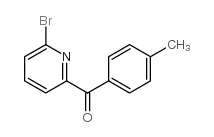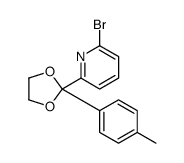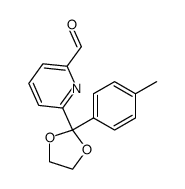87848-99-5
| 中文名 | 阿伐斯汀 |
|---|---|
| 英文名 | acrivastine |
| 中文别名 |
(E)-3-[6-[(E)-1-(4-甲基苯基)-3-吡咯烷-1-基丙-1-烯基]吡啶-2-基]-2-丙烯酸
(E,E)-3-[6-[1-(对甲苯基)-3-吡咯烷-1-基-1-丙烯基]-2-吡啶基]丙烯酸 阿伐司丁 |
| 英文别名 |
Semprex
(2E)-3-{6-[(1E)-1-(4-methylphenyl)-3-pyrrolidin-1-ylprop-1-en-1-yl]pyridin-2-yl}prop-2-enoic acid (E)-6-[(E)-3-(1-Pyrrolidinyl)-1-p-tolylpropenyl]-2-pyridineacrylic Acid Acrivastine BW 270C Acrivastinum BW A825C Acrivastina (E)-3-[6-[(E)-1-(4-methylphenyl)-3-pyrrolidin-1-ylprop-1-enyl]pyridin-2-yl]prop-2-enoic acid (2E)-3-{6-[(1E)-1-(4-Methylphenyl)-3-(1-pyrrolidinyl)-1-propen-1-yl]-2-pyridinyl}acrylic acid (2E)-3-{6-[(1E)-1-(4-Methylphenyl)-3-(pyrrolidin-1-yl)prop-1-en-1-yl]pyridin-2-yl}acrylic acid MFCD00869830 Acrivastin Duact (2E)-3-{6-[(1E)-1-(4-methylphenyl)-3-(pyrrolidin-1-yl)prop-1-en-1-yl]pyridin-2-yl}prop-2-enoic acid BW 825C |
| 描述 | Acrivastine (BW825C) 是用于治疗过敏性鼻炎的短效histamine 1受体拮抗剂。 |
|---|---|
| 相关类别 | |
| 体内研究 | Acrivastine(通常每天3次,每次8mg)是治疗慢性荨麻疹和过敏性鼻炎的有效且耐受良好的抗组胺药。在治疗季节性过敏性鼻炎中,阿伐他汀比安慰剂更有效,并且对氯马斯汀或特非那定的疗效相似。在治疗其中组胺具有致病作用的皮肤病中,阿克他那的功效优于安慰剂,并且类似于常用剂量的氯马斯汀,羟嗪,氯苯那敏,赛庚啶或特非那定。 Acrivastine引起的睡眠不如clemastine,不良反应的发生率与安慰剂或特非那定无法区分[1]。 4 mg和8 mg acrivastine均可减轻季节性过敏性鼻炎的症状,并显着改善打喷嚏,流鼻涕的症状评分和计算的总体评分。此外,8毫克acrivastine可减轻水汪汪的眼睛和喉咙发痒的症状评分。 Acrivastine对季节性过敏性鼻炎的治疗耐受性良好且有效[2]。 |
| 参考文献 |
| 密度 | 1.2±0.1 g/cm3 |
|---|---|
| 沸点 | 555.1±50.0 °C at 760 mmHg |
| 熔点 | 55.5-59.5 °C(lit.) |
| 分子式 | C22H24N2O2 |
| 分子量 | 348.438 |
| 闪点 | 289.5±30.1 °C |
| 精确质量 | 348.183777 |
| PSA | 53.43000 |
| LogP | 4.55 |
| 外观性状 | 固体;White to Almost white powder to crystal |
| 蒸汽压 | 0.0±1.6 mmHg at 25°C |
| 折射率 | 1.627 |
| 储存条件 | 2-8°C |
| 分子结构 | 1、 摩尔折射率:105.57 2、 摩尔体积(cm3/mol):297.7 3、 等张比容(90.2K):800.6 4、 表面张力(dyne/cm):52.2 5、 极化率(10-24cm3):41.85 |
| 计算化学 | 1.疏水参数计算参考值(XlogP):无 2.氢键供体数量:1 3.氢键受体数量:4 4.可旋转化学键数量:6 5.互变异构体数量:无 6.拓扑分子极性表面积53.4 7.重原子数量:26 8.表面电荷:0 9.复杂度:514 10.同位素原子数量:0 11.确定原子立构中心数量:0 12.不确定原子立构中心数量:0 13.确定化学键立构中心数量:2 14.不确定化学键立构中心数量:0 15.共价键单元数量:1 |
| 更多 | 1.性状:从异丙醇结晶。 2.熔点(℃):222(分解)。 |
|
Section1. IDENTIFICATION OF THE SUBSTANCE/MIXTURE Product identifiers Product name: Acrivastine CAS-No.: 87848-99-5 Relevant identified uses of the substance or mixture and uses advised against Identified uses: Laboratory chemicals, Manufacture of substances Section2. HAZARDS IDENTIFICATION Classification of the substance or mixture Not a hazardous substance or mixture according to Regulation (EC) No. 1272/2008. This substance is not classified as dangerous according to Directive 67/548/EEC. Label elements The product does not need to be labelled in accordance with EC directives or respective national laws. Other hazards - none Section3. COMPOSITION/INFORMATION ON INGREDIENTS Substances Synonyms: (E)-6-((E)-3-(1-Pyrrolidinyl)-1-p-tolylpropenyl)-2-pyridineacrylic acid Formula: C22H24N2O2 Molecular Weight: 348,44 g/mol Section4. FIRST AID MEASURES Description of first aid measures If inhaled If breathed in, move person into fresh air. If not breathing, give artificial respiration. In case of skin contact Wash off with soap and plenty of water. In case of eye contact Flush eyes with water as a precaution. If swallowed Never give anything by mouth to an unconscious person. Rinse mouth with water. Most important symptoms and effects, both acute and delayed To the best of our knowledge, the chemical, physical, and toxicological properties have not been thoroughly investigated. Indication of any immediate medical attention and special treatment needed no data available Section5. FIREFIGHTING MEASURES Extinguishing media Suitable extinguishing media Use water spray, alcohol-resistant foam, dry chemical or carbon dioxide. Special hazards arising from the substance or mixture Carbon oxides, nitrogen oxides (NOx) Advice for firefighters Wear self contained breathing apparatus for fire fighting if necessary. Further information no data available Section6. ACCIDENTAL RELEASE MEASURES Personal precautions, protective equipment and emergency procedures Avoid dust formation. Avoid breathing vapors, mist or gas. Environmental precautions Do not let product enter drains. Methods and materials for containment and cleaning up Sweep up and shovel. Keep in suitable, closed containers for disposal. Reference to other sections For disposal see section 13. Section7. HANDLING AND STORAGE Precautions for safe handling Provide appropriate exhaust ventilation at places where dust is formed. Conditions for safe storage, including any incompatibilities Store in cool place. Keep container tightly closed in a dry and well-ventilated place. Recommended storage temperature: 2 - 8 °C Specific end uses no data available Section8. EXPOSURE CONTROLS/PERSONAL PROTECTION Control parameters Components with workplace control parameters Exposure controls Appropriate engineering controls General industrial hygiene practice. Personal protective equipment Eye/face protection Use equipment for eye protection tested and approved under appropriate government standards such as NIOSH (US) or EN 166(EU). Skin protection Handle with gloves. Gloves must be inspected prior to use. Use proper glove removal technique (without touching glove's outer surface) to avoid skin contact with this product. Dispose of contaminated gloves after use in accordance with applicable laws and good laboratory practices. Wash and dry hands. The selected protective gloves have to satisfy the specifications of EU Directive 89/686/EEC and the standard EN 374 derived from it. Body Protection Choose body protection in relation to its type, to the concentration and amount of dangerous substances, and to the specific work-place., The type of protective equipment must be selected according to the concentration and amount of the dangerous substance at the specific workplace. Respiratory protection Respiratory protection is not required. Where protection from nuisance levels of dusts are desired, use type N95 (US) or type P1 (EN 143) dust masks. Use respirators and components tested and approved under appropriate government standards such as NIOSH (US) or CEN (EU). Section9. PHYSICAL AND CHEMICAL PROPERTIES Information on basic physical and chemical properties a) AppearanceForm: solid b) Odourno data available c) Odour Thresholdno data available d) pHno data available e) Melting point/freezingno data available point f) Initial boiling point and no data available boiling range g) Flash pointno data available h) Evaporation rateno data available i) Flammability (solid, gas) no data available j) Upper/lowerno data available flammability or explosive limits k) Vapour pressureno data available l) Vapour densityno data available m) Relative densityno data available n) Water solubilityno data available o) Partition coefficient: n- log Pow: 4,243 octanol/water p) Autoignitionno data available temperature q) Decompositionno data available temperature r) Viscosityno data available s) Explosive propertiesno data available t) Oxidizing propertiesno data available Other safety information no data available Section10. STABILITY AND REACTIVITY Reactivity no data available Chemical stability no data available Possibility of hazardous reactions no data available Conditions to avoid no data available Incompatible materials Strong oxidizing agents Hazardous decomposition products Other decomposition products - no data available Section11. TOXICOLOGICAL INFORMATION Information on toxicological effects Acute toxicity no data available Skin corrosion/irritation no data available Serious eye damage/eye irritation no data available Respiratory or skin sensitization no data available Germ cell mutagenicity no data available Carcinogenicity IARC:No component of this product present at levels greater than or equal to 0.1% is identified as probable, possible or confirmed human carcinogen by IARC. Reproductive toxicity no data available Specific target organ toxicity - single exposure no data available Specific target organ toxicity - repeated exposure no data available Aspiration hazard no data available Potential health effects InhalationMay be harmful if inhaled. May cause respiratory tract irritation. IngestionMay be harmful if swallowed. SkinMay be harmful if absorbed through skin. May cause skin irritation. EyesMay cause eye irritation. Signs and Symptoms of Exposure To the best of our knowledge, the chemical, physical, and toxicological properties have not been thoroughly investigated. Additional Information RTECS: UD3474000 Section12. ECOLOGICAL INFORMATION Toxicity no data available Persistence and degradability no data available Bioaccumulative potential no data available Mobility in soil no data available Results of PBT and vPvB assessment no data available Other adverse effects no data available Section13. DISPOSAL CONSIDERATIONS Waste treatment methods Product Offer surplus and non-recyclable solutions to a licensed disposal company. Contaminated packaging Dispose of as unused product. Section14. TRANSPORT INFORMATION UN number ADR/RID: -IMDG: -IATA: - UN proper shipping name ADR/RID: Not dangerous goods IMDG: Not dangerous goods IATA:Not dangerous goods Transport hazard class(es) ADR/RID: -IMDG: -IATA: - Packaging group ADR/RID: -IMDG: -IATA: - Environmental hazards ADR/RID: noIMDG Marine pollutant: noIATA: no Special precautions for user no data available SECTION 15 - REGULATORY INFORMATION N/A SECTION 16 - ADDITIONAL INFORMATION N/A |
| 危害码 (欧洲) | Xn,Xi |
|---|---|
| 风险声明 (欧洲) | R22:Harmful if swallowed. R43:May cause sensitization by skin contact. |
| 安全声明 (欧洲) | S37/39 |
| 危险品运输编码 | NONH for all modes of transport |
| WGK德国 | 3 |
| RTECS号 | UD3474000 |
|
~% 
87848-99-5 |
| 文献:Journal of Pharmaceutical Sciences, , vol. 73, # 10 p. 1339 - 1344 |
|
~% 
87848-99-5 |
| 文献:Journal of Pharmaceutical Sciences, , vol. 73, # 10 p. 1339 - 1344 |
|
~% 
87848-99-5 |
| 文献:Journal of Pharmaceutical Sciences, , vol. 73, # 10 p. 1339 - 1344 |
|
~% 
87848-99-5 |
| 文献:Journal of Pharmaceutical Sciences, , vol. 73, # 10 p. 1339 - 1344 |
| 上游产品 3 | |
|---|---|
| 下游产品 0 | |





